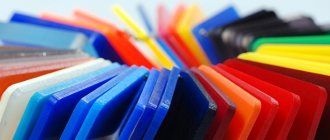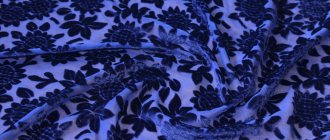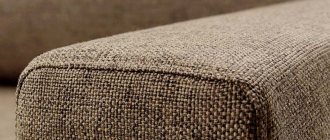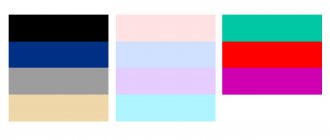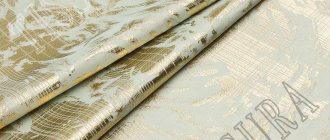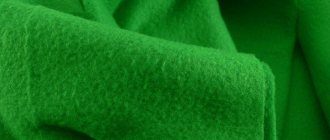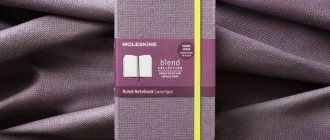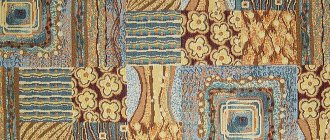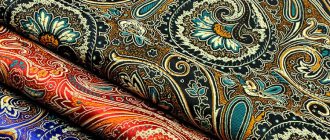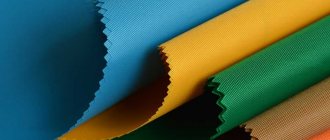Durable and soft polyamide fabric has been popular for a long time. It was nicknamed breathable because polyamides allow air to pass through well. It is used not only for sewing things, but also for industry. In the article we will describe the characteristics of the material, varieties and care rules.
Polyamide: material description
Many people are interested in what kind of fabric this is – polyamide. It is produced from organic raw materials (oil, gas or coal) in several stages:
- Polymer synthesis - at this stage, caprolactam is extracted from benzene.
- Processing of caprolactam into polymer.
- Textile formation – polymers are formed into threads.
Inexperienced people may confuse polyester and polyamide, calling everything “synthetic.” So what is the difference between them? The difference is in the polymers used and the bonding of the fibers. Polyester allows air to pass through better, but gets wet more. But both types of synthetics have high strength, flexibility, resistance to wear and creasing, as well as the accumulation of static electricity. Synthetics today are not the same as the products they were 10 years ago. It can be added to natural fabrics and improve their properties, for example, reducing the tendency to wrinkle.
Interesting! Polyamide is stronger and more expensive than polyester.
Modern polyamide fiber is used in its pure form mainly for nylon tights. More often they are supplemented with other materials: wool, polyester, elastane, polyurethane.
Polyamide feels like cotton fabric. To distinguish real polyamide, pay attention to the electrification. If sparks appear when dressing, then you are holding real polyamide fabric in your hands.
The second way to check is ignition. If the fabric begins to melt without any aroma and a ball forms from the smoldering, then it is polyamide.
The third way to identify tissue is more laboratory - immersion in mineral acid with a high concentration. This polyamide fabric is completely dissolvable.
Technical qualities and areas of application
Characteristics such as wear resistance and strength have allowed the structural material to be used in all sectors of the national economy:
- • In light industry it is used for the production of: summer clothes, raincoats and jackets, synthetic ropes and ropes, sports equipment, sneakers, sneakers and soles for other shoes; carpets and rugs, fishing gear, equipment for tourists, umbrellas, furs, tights and underwear.
- • In mechanical engineering, rollers, bushings, wheel rims and shock-absorbing mechanisms are made from polyamide plastic.
- • In the construction industry, it is used for the manufacture of: pipeline parts, shut-off and control valves, some types of solvents and paint and varnish products, antiseptic coatings and against metal corrosion.
- • The food industry uses synthetic elements for equipment that come into contact with products.
- • In medicine – these are suture surgical thread, artificial prostheses and joints, orthopedic corsets, support bandages and bandages, blood vessels.
Features of the composition
Polyamide has the following properties: matte rough or glossy smooth surface. Every texture has a positive and a negative.
pros
Modern polyamide material has many positive features:
- the highest strength - the thread can withstand a load of up to 1.5 kg. with a thickness slightly larger than a human hair;
- weightlessness - clothes made from the material are very light;
- good maintenance of the shape of the product - the density of polyamide allows things not to wrinkle and look well-groomed after folded;
- polyamide fire-resistant fabric does not ignite in fires, it can only melt at elevated degrees;
- perfectly allows air flow, allowing you to cool the body in hot weather;
- the fabric is gentle to the body, pleasant to touch;
- can be painted in any shade;
- polyamide is one of the materials that stretches well, allowing you to stretch the item to different body types;
- Manufacturers often say that a material that does not require special care is polyamide. It is enough to wash it in a washing machine with a powder that matches the color of the fabric and nothing will shrink;
- good reflection of light rays;
- do not deteriorate from thermal oxidizers;
- Polyamide dyed thread will not fade in the sun, from fungus and sea salt. Also, it does not rub during wear, even on bends;
- the fabric is water-repellent and quick-drying, so it is often added for winter and mid-season outerwear.
Minuses
Despite many advantages, there are negative properties:
- does not retain heat - due to its good throughput, the wind quickly blows away the heat. For winter clothes this is a negative property, and for summer clothes it is a positive property;
- at high temperatures from 40C it becomes hard and can break;
- fibers do not absorb moisture, which is why they become highly electrified. Moreover, static electricity accumulates over time and can “spark” when getting dressed;
- if you want to alter clothes or home textiles yourself, the fabric will crumble when cutting;
- instantly absorbs greasy and sweaty stains that are difficult to remove;
- may cause allergies in people with sensitive skin.
The material has many more advantages than disadvantages. Therefore, the material is very popular and is used for all seasons of the year in various forms.
pros
Positive features include:
- • Flexibility. Under heavy loads and stretching, the shape cannot be deformed.
- •Products dry faster than those made from organic fabrics due to their water-repellent properties.
- • During a fire it is not flammable and does not flare up. It just melts and smolders.
- • Not afraid of ultraviolet radiation, under the influence of which it does not fade or lose its original color.
- • Resistant to mold and mildew.
- • Can be used in aggressive conditions, as it is not susceptible to corrosion by salts, acids and alkalis.
- • The material is not itchy and pleasant to the human body.
- • Technologists at enterprises can easily paint it in any color scheme.
- • When washed by hand and machine, it remains in its original shape (does not shrink, does not wrinkle).
- • Highly durable, as it consists of threads, one of which can withstand a colossal load of 1.5 kg.
- • Low specific gravity gives the product “weightlessness”.
Types of polyamide fabric
Various questions are received about the types of polyamide fabric. Many people are surprised, what kind of canvas is this, which has 7 different types? Now we will talk about each type separately.
Nylon
This is the original and still in demand type of matter. It is used to produce underwear, tights and is added to textile and knitwear products (socks, blouses, sweaters). It is beautiful, light and does not take long to dry even in an unventilated area. But when wet, it can stretch, and also causes allergic reactions in people with delicate skin.
Caring for nylon is not difficult; you can use a washing machine with cold or warm water; hot water will ruin the fabric. The fabric does not wrinkle, so there is no need to iron it. But if the item was dried in a crumpled state, then you can walk over it with a warm iron. Nylon fiber is often added to cotton and satin to make fabrics lighter, cheaper and more resilient.
Jordan
It can be used in any clothes for adults and in clothes for children. The fabric is very soft, smooth, has a pleasant shimmer, repels liquids and conducts air currents. A variety of outerwear is made from fabric fabric, from off-season windbreakers to winter overalls.
Elastane
Used to add to other materials. It allows fabrics to stretch up to 8 times with a return to their original appearance, and become not susceptible to fading in the sun, damage from greasy and sweaty stains, sea water, and cosmetics.
Velsoft
Another type of polyamide fabric with high strength and hairiness. She is also not prone to fumbling, breathes and is very warm. It has the appearance of a voluminous fleecy material on which pellets do not form. After washing, the shape of the product is not lost, the size does not decrease and the color is not washed out. It can be one color or with a variety of images. The material is very soft, therefore it is in demand for home textiles (blankets, towels, bedspreads) and everyday adult and children's clothing.
Polyamide filter fabric
Very dense and difficult to tear compared to natural fabrics. It does not deteriorate from chemical reagents and stores solid, liquid and gaseous particles, preventing them from getting on the skin.
Taslan
Used for sewing clothes for adults. It weighs more than nylon, but is stronger and has excellent breathability due to its porous structure.
Nylon, tactel
Very famous types of polyamide from which hosiery products are made. Very durable and lightweight.
Anid
Anide is a type of nylon with better heat retention and coloring properties.
Varieties and modifications
Polyamide and nylon are the same fiber and have been used widely and successfully throughout the world for over 50 years. Their properties are almost the same, both are distinguished by high tensile strength, wear resistance, have a wide range of minus and plus temperatures, and withstand steam loads up to 140 degrees. PA numbers are used on the Russian market: 6, 66, 11, 12, 610. After recycling - 6-12, 6-21.
The PA 6 group is widely used in world and Russian factories. Based on this substance, a structural thermoplastic is made, which has found its place in the mining industry and in the automotive industry. Due to its resistance to hydrocarbon products, mechanical properties and moisture absorption, this component is added to the production of critical components and parts.
Application
Many people are interested in what polyamide is in clothing and what health hazards it can cause. There may be harm to health if the fabric causes allergic reactions. In other cases, no harm is caused to health, otherwise its production and use in clothing would be prohibited. On the contrary, polyamide is very widely used in various fields. For example, for sewing everyday items (socks, sweaters, sweaters, overalls, trousers, underwear).
The material is also often used in the manufacture of home textiles, lace, yarn, thermal underwear, various shoes, wallets, briefcases, artificial fur, business card holders, bags, laces, ropes, rubber tires, carpets, winter and demi-season outerwear.
Polyamide fabric is used to make workwear for various specialists: builders, doctors, oil workers, firefighters, tourists, athletes, actors, etc. They even make fishing nets and gear from it, which are very durable and reliable.
History and modernity
This name includes a whole group of subspecies of matter created by mixing organic and artificial fibers. Therefore, it is difficult to determine the exact date when synthetics began to be produced. In the thirties of the last century, nylon was invented for car tires. Due to its exceptional characteristics (strength, ductility), it began to be used in the creation of clothing and footwear.
Only in the 60s, the production of polyamide as an independent type of new fabric was established experimentally. For a very long time people did not accept it, as they were accustomed to dressing from natural material. But soon it took a leading position and was included as a mandatory component for the creation of light industrial products. Today we meet products at every step (parts of household appliances, computers, dishes, building materials, elements in railway cars, airplanes and ships).
Features of caring for polyamide clothing
In order for clothes made of polyamide to serve for a long time, it is necessary to use a delicate washing mode with a temperature not exceeding 40C. After all, elevated temperatures provoke creases and cracking. The spinning and drying provided by the machine are too strong for the fabric, so they are excluded. Strong manual spinning is also not acceptable. Wet items are hung on a simple hanger and waited to dry completely.
Usually the material does not wrinkle at all and there is no need for ironing. But if the need arises, then when ironing the iron should be in a non-steam and warm mode not exceeding 40C.
Important! The steamer will completely damage polyamide clothing and textiles, so it should not be used.
Look at photo examples of the use of polyamide fabric in casual and outerwear, as well as in home textiles below.
1 of 27
Specifications
It is not possible to list all the properties of polyamides in numbers. Let's look at a few common types:
- • PA6-LPO-T18. Impact strength is 30 Charpy. Tensile strength 77 MPa and above. Breakdown resistance – 25 kV per mm.
- • Model 66-1A is resistant to deformation. Not susceptible to chemical compounds (oil, gasoline, alkalis). Used in the manufacture of parts subject to mechanical loads (bearing shell, gear). Melts at temperatures from 254 to 260 degrees.
To create polyester or nylon, various additives are used, which provide additional data on bending stress, temperature bending under load, and others.
Types and their properties
Synthetic textile material polyamide has a wide variety of types, but the properties and characteristics of all of them are similar. The materials are practical, comfortable to wear, and do not require complex or careful care. We list the main modern brands of polyamide:
- velsoft - fleecy, pleasant-to-touch textile, warm but not hot, used for sewing clothes for adults and children;
- taslan is a comfortable material, porous, so it allows air to pass through well and allows the skin to breathe; it is used for sewing everyday models for adults;
- nylon is a familiar material for stockings and tights, light, beautiful, dries very quickly, and is often added to the composition of fabrics for underwear;
- Jordan - perhaps the softest polyamide textile with high water-repellent properties, is used for sewing children's and adult clothing;
- elastane - usually used as an additive to other fabrics, giving them elasticity and aesthetics.
In addition to the listed brands of polyamide, there are others that are not so common. In addition, synthetic fibers are often added to the composition of other materials, giving the fabrics the necessary properties.
What kind of fabric is Velsoft? Photo
In addition to textiles, the polymer is also used in other industries. For example, in medical. They use polyamide, which is a suture material. It is part of surgical sutures and even artificial blood vessels. The fibers are so thin that the term “micro” is applied to them.
Care
Polyamide fabrics are not at all demanding in terms of care. Read the accompanying labels carefully to understand how to wash the purchased item. Machine washing is usually allowed, but at a temperature not exceeding 40°C and without any softening agents, otherwise the water-repellent properties of the material will disappear.
As a rule, such clothes do not need ironing; they dry very quickly in natural conditions, so there is no need to turn on the intensive spin mode.
Polyamide fabrics, although they have a number of negative properties, are very easy to use and delight with their beautiful appearance. If used correctly, they will last for decades while maintaining their brightness.
Dear readers of the Tkan.Club website, if you still have questions on this topic, we will be happy to answer them. Leave your reviews, comments, share stories if you have dealt with this material! Your life experience may be useful to other readers.
Flaws
Polyamide is a synthetic material, the harm of which is the possible occurrence of allergic reactions. It should not be worn by people with sensitive skin. The thermal conductivity of the material is much worse than that of natural fabrics, so such clothes do not warm and cool well, and you can sweat in them. Since the body does not breathe, there is a certain discomfort when wearing. That is why underwear and things for babies are not made from the textiles described.
Polyamide is also harmful because it accumulates static electricity. The canvas crackles and sparks, which causes unpleasant sensations. When cut, it crumbles a lot, and is inconvenient to use because it easily absorbs grease and then is very difficult to wash off.
